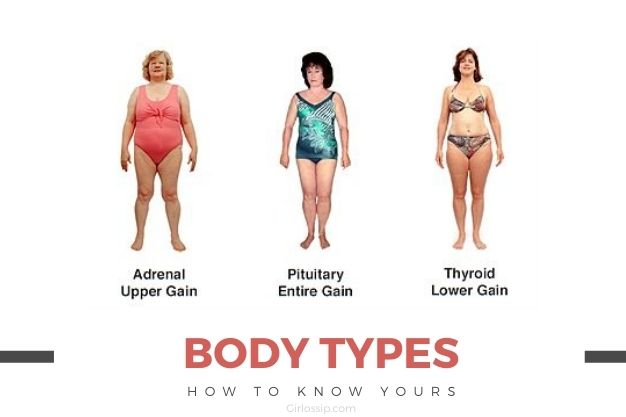
What do I do to lose weight?
How do I manage my diet?
Why am I not achieving my body goals?, and the list goes on.
You, I, everyone, are guilty of scrolling through our feeds to check out the fitness journeys of people around us. And all of these questions hit us every now and then. As much as you want to achieve your desired body type, it is important that you understand your body first.
To assess the similarities in the human physique, doctor and psychologist William Herbert Sheldon studied thousands of images. And he came to the conclusion that there were only three forms of general body that he called somatotypes.
The three somatotypes in constitutional psychology include endomorphy, ectomorphy, and mesomorphy. In this article we’ve tried to cover all three types of body types that exist and how you can find yours. Let’s read.
- Ectomorph
- Mesomorph
- Endomorph
Ectomorphs:
An ectomorph appears to be slim as either body fat or muscle, and fails to gain weight. They can eat stacks of food, and still look the same. People who struggle to gain muscle are also referred to as “hard-gainers.”
They also have a high metabolism, allowing their bodies to quickly burn calories. As a consequence, without much body fat, they’re also very skinny.
Ectomorphs tend to have a lean structure, long arms, and thin abdominal muscles. They can look skinnier than they are, especially in the calves and forearms, even if an ectomorph manages to put on weight.
- Linearity and fragility of relative predominance
- Higher sensory sensitivity is caused by greater skin surface area compared to body mass.
- Have a disposition that is more introverted, reflective, inhibited, and sensitive.
Mesomorphs:
There is a middle-of-the-road structure of the mesomorph which takes the best of both worlds. They tend to have broad shoulders, a narrow waist, relatively small joints, and bellies with round muscles.
In brief, you have a normal propensity to be fit and moderately muscular if you’re a mesomorph. But you might be able to “bounce back” more quickly from being out of shape than the other two forms of body, building muscle and burning fat with comparatively quick burning.
Mesomorphs are hard to miss, with their extraordinary muscle mass, wide bones, and rectangular form. Mesomorphs, depending on their health objectives, have the potential to lose or gain weight.
- Relative predominance in the body structure of muscle , bone, and connective tissue.
- Outline: heavy, rough, and rectangular.
- Have a personality that is more active, dynamic, assertive, and aggressive.
Endomorphs:
The endomorph appears to gain and hold onto weight. With a thick rib cage, large shoulders, and shorter limbs, their construction is a little broader than an ectomorph or mesomorph. They can have more muscle than any of the other kinds of body, but without large quantities of associated body fat, they also fail to obtain it. If you ever feel like you are adding extra pounds just walking around a donut store, you may be an endomorph.
Endomorphs, particularly in their legs, are powerful. They gain muscle very easily, but they can also gain fat easily, which can be difficult for them to lose. A sluggish metabolism is the explanation for this, so a sensible diet is an absolute must.
- Significant predominance of soft roundness in different body areas.
- The digestive viscera is more vast and the body economy is relatively dominant. Have a disposition which is more relaxed, happy and extroverted.
The easiest way to classify the type of body is to critically determine yourself. A body type quiz can also be attempted, but a quick look in the mirror works too!
Here are the characteristics to look for:
Ectomorph: There’s almost no fat on your body, a wiry frame, and long , slender limbs.
Mesomorph: With a balance of muscle and fat, you have a proportionate figure.
Endomorph: You’ve got a stubborn frame and strong , sturdy legs.
Improving our health and wellbeing is one of the most important ways to start when building an exceptional life.
Not only can taking up an exercise regimen offer the physical advantages of improved energy levels and stamina, but it can also do wonders for your mental health.
But it could do more harm than good to literally throw yourself into intensive training.
And why?
Because it is important to adapt every workout routine you pick that suit your body type.
What body type am I?
Even though three definitions give us a solid base to build on, there is a litany of other variables at play here.
Visualize there is a triangle with one of the three types of body representing each point.
At any point within the triangle, we humans may exist, from storing fat easily to not easily gaining weight to building muscle well. The fact is that we all have certain components of each of these.
It falls down to –
- Some individuals tend to store more energy as fat and are less efficient.
- Some bodies are quite powerful at muscle development.
- Few bodies are poor at building muscle.
It doesn’t necessarily mean that your body type will be exactly the same as listed above. It may fall down into a mix of categories. We hope this article might have opened up a little window to what you want to look for.